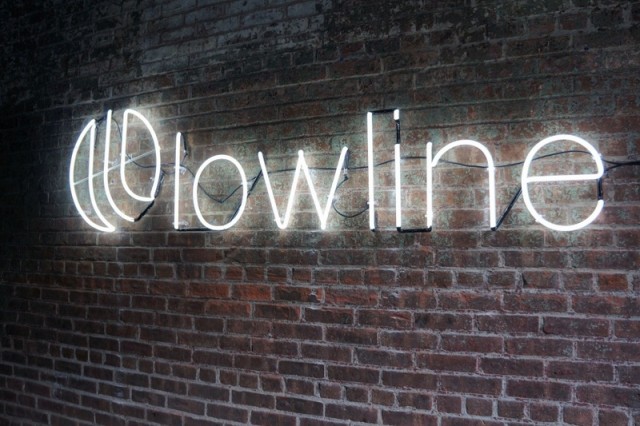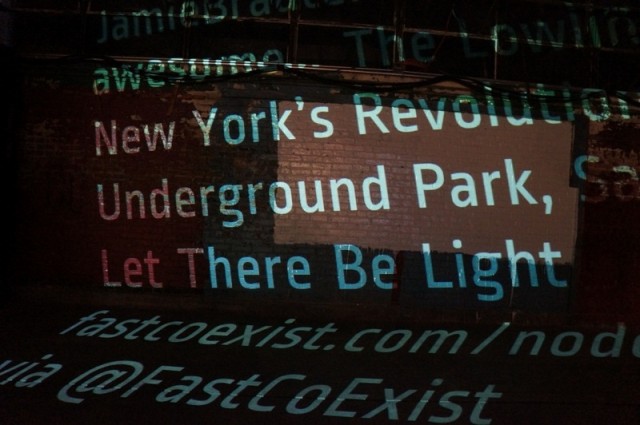Living in a concrete jungle with all the skyscrapers competing like plants that strive for sunlight, I always picture an opposing underworld with trees and buildings heading towards the core. Pipes underground and abandoned train stations are always fantasies where adventures start. We have green roofs on the upper edge of our skyline, so why not have green parks underneath the towering buildings? Last Friday, I went on an expedition to the Lowline exhibit and had a glimpse of our future.
The exhibit is based on the concept of turning a vacant old trolley station underneath Delancey Street that was built in 1903 into an open green space, the world’s first underground public park. It displays the ideas and designs for reactivating this abandoned site and specifically the use of optical technology that is essential in making the project feasible.
As I entered the exhibit, a 50 foot suspended model of the grid of Manhattan appeared, showcasing the underground network of MTA subways stations, some of which are active and some of which are abandoned. Then, a street map with cars, trains, ferries, bikes, and pedestrians was projected, presenting the city in motion. These maps give great insight into how the city functions with our transportation network, and what the space beneath the city looks like.
I finally reached the major model piece of the project, exhibiting the physical design and the way in which light technology can naturally illuminate the park. Attached to the roof is a parabolic sun collector that enables sunlight to travel through a fiber-optic heliotube. The light is then dispersed by a canopy distributor, providing ample sunlight below ground. Beneath the canopy, there is a small park with grass, plants, and a tree installed to show that photosynthesis is able to occur underground with this exciting new technology.
The exhibit itself is not as riveting as expected. However, the aim of this showcase is to reach out to the local community and public officials to gain crowd sourcing funds, in addition to exploring the space and experimenting with the concept. I believe that once they successfully crowd source funds, they can carry out their second phase in further developing the project and bringing it to reality. Because of these technological innovations and the smart idea to recycle this abandoned space, underground parks are no longer just a fantasy.
Photos: Jenny Kun



